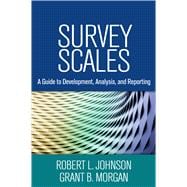User-Friendly Features
*End-of-chapter exercises with sample solutions, plus annotated suggestions for further reading.
*"Not This/But This" examples of poorly written and strong survey items.
*Chapter-opening overviews and within-chapter summaries.
*Glossary of key concepts.
*Appendix with examples of parametric and nonparametric procedures for group comparisons.









